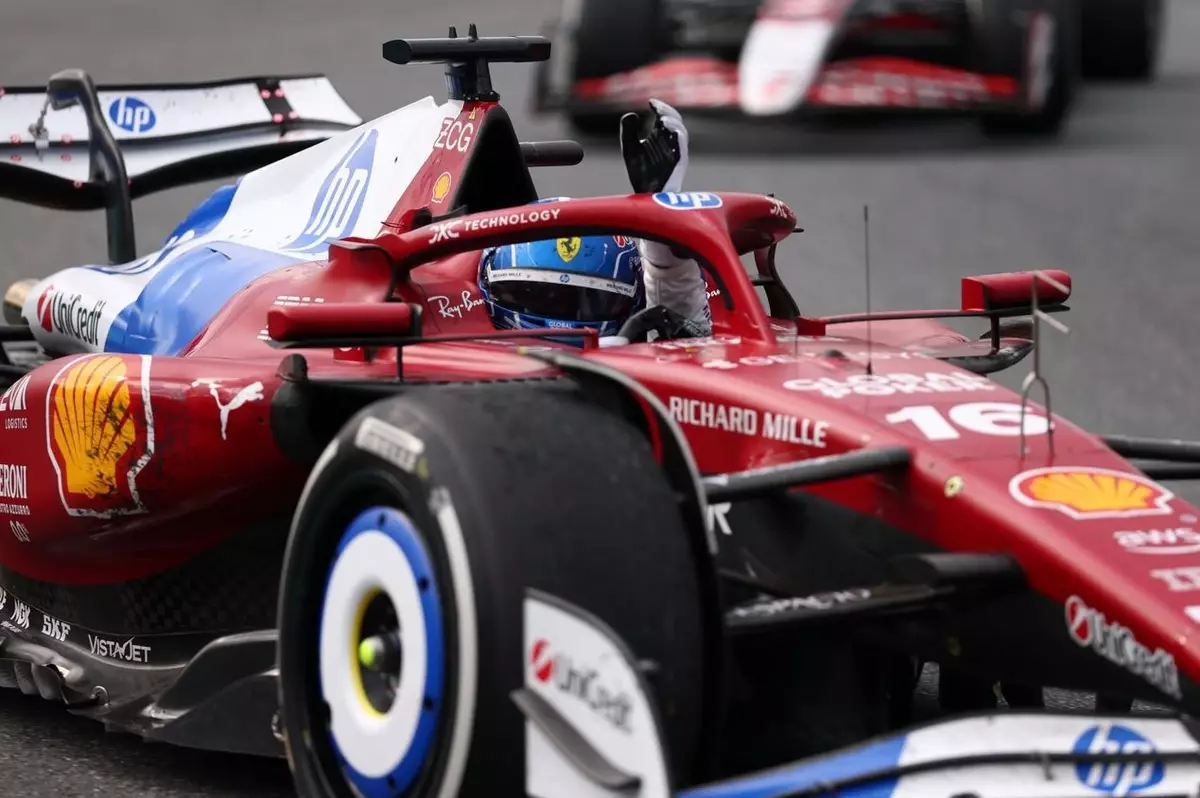In the high-octane world of Formula 1, few events stir the passions of fans and insiders alike as much as team dynamics during a race. The recent Miami Grand Prix showcased a fascinating interplay between two of the sport’s most talented drivers, Charles Leclerc and Lewis Hamilton. Despite both drivers ultimately downplaying the controversies that arose from the race, the incident sparks a deeper examination of strategy, communication, and underlying team relations in competitive sports.
The Strategy Fracas
During the Miami Grand Prix, the Ferrari duo found themselves in a precarious situation on the track. Leclerc, wielding hard compound tyres, was fastened in a strategic bind while Hamilton was on softer, medium tyres. As the race unfolded, frustrations mounted, leading Hamilton to express dissatisfaction over team radio about the lack of a strategy to allow him to overtake. In a sport that thrives on quick decisions and flawless execution, such exchanges illustrate the thin margin for error and the implications of tactical choices.
Leclerc, despite his own struggles, graciously insisted that he harbored “no bad feelings” towards Hamilton, suggesting an air of camaraderie that may mask underlying tension. This unobtrusive approach speaks volumes about the maturity of both drivers. However, it also raises questions regarding the effectiveness of the Ferrari team in managing its internal dynamics during critical phases of a race. For Leclerc, the challenge seems compounded by the necessity to simultaneously protect his own strategy while navigating the expectations of a teammate who is also a formidable competitor.
The Communication Breakdown
One of the pertinent critiques that Leclerc himself acknowledged was the apparent lack of communication preceding the positional swap. In team sports, especially those requiring high-stakes coordination and real-time adjustments, effective communication is paramount. Leclerc highlighted a potential area for improvement, stating that the drivers might have benefitted from more thorough discussions prior to the switch. This insight brings to light the often-underestimated role of pit strategy in racing—not simply as mechanical execution but also as a nuanced dance of human interactions and decision-making processes.
It’s easy to overlook how rapidly things can change within the race context. Frustration naturally arose as drivers fought not only for their individual standings but also for a deeper understanding of the team strategy. Hamilton, known for his relentless drive and competitive spirit, found himself ensnared within a complex web of race decisions that seemed to undermine his efforts.
The Complexities of Racing Rivalries
On the surface, Leclerc’s cordial remarks towards Hamilton may appear to reflect a desire to maintain team harmony. However, delving deeper, it is evident that competitive instincts can easily twist camaraderie into rivalry, especially under the pressures of a demanding race. Leclerc’s modest appraisal of his performance—recognizing his struggles while also considering Hamilton’s different tire strategy—speaks to a delicate balance of teamwork and competition that defines modern F1 racing.
Both drivers, embroiled in their own trials during the Miami Grand Prix, are prime examples of the tension that exists within elite motorsport. Hamilton’s mounting anxiety while battling behind Leclerc was palpable, revealing the emotional stakes involved as drivers vie not just for points but for their reputations and legacies. This underscores an essential aspect of sport: the pressure to perform can often eclipse the mere act of racing.
The Path Forward
For Ferrari, the overarching takeaway from this incident is the vital need for continuous improvement in handling driver communication and strategy implementation. Leclerc’s acknowledgment that “we need to be robust enough” speaks to the aspiration for progress not only as individuals but as a cohesive unit. The potential for a stronger, more resilient team lies in learning from these Racing Lab episodes—striving towards a day when laps are not marred by confusion or frustration.
As both Leclerc and Hamilton move forward from the Miami Grand Prix, one can only imagine the lessons they will carry into future races. Mistakes can serve as a powerful catalyst for growth, and their intricate partnership, fraught with pressures and rivalries, may well emerge with renewed strength and understanding in the challenging road ahead. Racing, after all, is as much about navigating the complexities of human interaction as it is about speed and agility on the track.


Leave a Reply